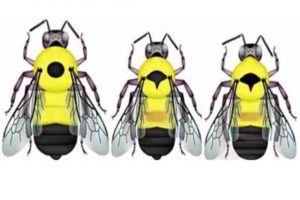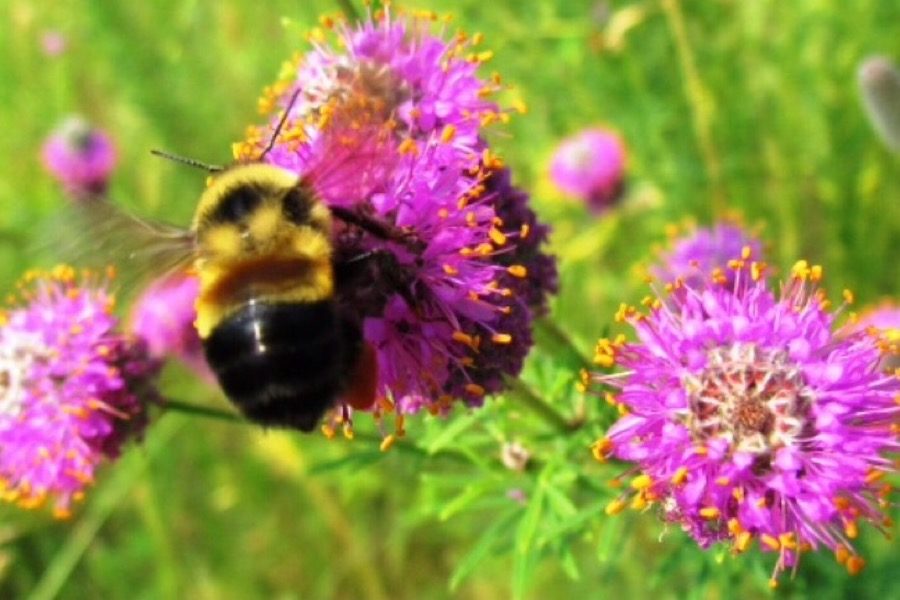Obtained from www.fws.gov. Photo Credits: Christy Stewart.
Bunch of Bombus?
Endangered
As this year ends, it is important to look back and stay in touch with issues that will always be associated with 2017. The “bee issue’ is one of them.
Earlier this year, the plan to add the rusty-patched bumble bee to the Endangered Species List came to light. The United States Fish and Wildlife Service added this bee, the Bombus affinis, in March 2017.
Several Hawaiian bees that are part of the Hylaeus genus made it to the Endangered Species List before the Bombus affinis. These yellow-faced bees showed up on the list back in 2016, but this crisis did not greatly affect mainland America.
The arrival of the Bombus affinis on the list, however, is alarming for a greater number of people. It is the first bumble bee on the list. While the yellow-faced bees pollinate Hawaiian plant life, bumble bees pollinate more important crops over a larger area, so its endangerment is even more relevant.
Awareness
Without working at my local orchard, I probably would never have known about the “bee issue.” So often in America, the land of plenty, we forget that we do actually need to pay attention to animal and plant life. According to the Genetic Literacy Project, bees are pollinators, and pollinators promote the growth of approximately a third of crops in the United States (par. 11). While some make this into a bigger deal than it is, and others ignore it as another environmentalist cause, it is up to us to find the middle ground. It is up to us to teach our children, families, and communities how to appreciate the animals and resources that help support us, while not blowing the issue out of proportion.

How do we do this?
A few practical things to do includes making sure the pesticides we use do not have neonicotinoids and encouraging pollination by planting flowers. Familiarizing ourselves with the local and low-maintenance food sources in our areas such as small orchards and farms is also an enjoyable way to teach our children about the earth.
The earth is a responsibility. Let us pray to imitate St. Francis of Assisi’s sensitivity toward animals and ask St. Kateri Tekakwitha’s intercession for an increase of gratitude to God for nature.
“Then God said ‘Let us make man in our image, after our likeness; and let them have dominion over the fish of the sea, and over the birds of the air, and over the cattle, and over all the earth, and over every creeping thing that creeps upon the earth.’” -Genesis 1: 26-
Main Resources:
Citybugs.tamu.edu. “What Is a Neonicotinoid?” Insects in the City, Citybugs.tamu.edu, an Extension of Texas A & M AgriLife, citybugs.tamu.edu/factsheets/ipm/what-is-a-neonicotinoid/. Accessed Nov 29, 2017
Evon, Dan. “Bees Added to Endangered Species List.” Snopes.com, Snopes.com, 8 Oct. 2016, www.snopes.com/bee-species-endangered/. Accessed Oct 25, 2017
Genetic Literacy Project. “Pollinator Myth: Are Bees Responsible for One Third of Global Food, Heightening Crisis? More like 7%.” Genetic Literacy Project, Genetic Literacy Project, 12 Aug. 2015, geneticliteracyproject.org/2015/08/12/pollinator-myth-bees-responsible-one-third-global-food-heightening-crisis-like-7/. Accessed Dec 3, 2017.
United States, Congress, U.S Fish & Wildlife Service. “Ecos.fws.gov.” Ecos.fws.gov, U.S. Fish & Wildlife Service. ecos.fws.gov/ecp0/reports/ad-hoc-species-report?kingdom=I&status=SAT&mapstatus=3&fcrithab=on&fstatus=on&fspecrule=on&finvpop=on&fgroup=on&header=Listed+Animals.

